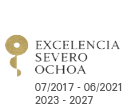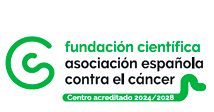Activity Detail
Seminar
One step closer to modulate transsulfuration in humans and pathogens
Alfonso Martínez de la Cruz
 Cystathionine β-synthase (CBS), the first enzyme of the reverse transsulfuration pathway, catalyzes the pyridoxal-5´-phosphate (PLP)-dependent -replacement reaction that condenses L-serine with L-homocysteine to yield cystathionine and water. Besides this canonical reaction and using cysteine and homocysteine as substrates, CBS can also efficiently produce hydrogen sulfide (H2S) through alternative -replacement and -elimination processes. The structural information on the full-length enzyme has remained elusive for decades and is still very scarce, but some advances in the recent years have uncovered its peculiar modular architecture, provided a glimpse of its conformational landscape, and revealed some of the reaction intermediates formed during the catalysis. All these data have helped us comprehend, at least partially, regulatory mechanisms and catalytic abilities of the enzyme across different organisms that remain elusive for decades. In my seminar I will overview the current information on the CBS structure from its most sophisticated variants found in mammals to its simplest homologs in bacteria and parasites. A detailed understanding of CBS structure and function are key to subsequently serve as a basis for the development of drugs to treat human diseases, such as CBS-deficient homocystinuria, cognitive impairments including Alzheimer’s disease and Down syndrome, or some cancers, but also to develop new antibiotics against multidrug-resistant pathogenic bacteria.
Cystathionine β-synthase (CBS), the first enzyme of the reverse transsulfuration pathway, catalyzes the pyridoxal-5´-phosphate (PLP)-dependent -replacement reaction that condenses L-serine with L-homocysteine to yield cystathionine and water. Besides this canonical reaction and using cysteine and homocysteine as substrates, CBS can also efficiently produce hydrogen sulfide (H2S) through alternative -replacement and -elimination processes. The structural information on the full-length enzyme has remained elusive for decades and is still very scarce, but some advances in the recent years have uncovered its peculiar modular architecture, provided a glimpse of its conformational landscape, and revealed some of the reaction intermediates formed during the catalysis. All these data have helped us comprehend, at least partially, regulatory mechanisms and catalytic abilities of the enzyme across different organisms that remain elusive for decades. In my seminar I will overview the current information on the CBS structure from its most sophisticated variants found in mammals to its simplest homologs in bacteria and parasites. A detailed understanding of CBS structure and function are key to subsequently serve as a basis for the development of drugs to treat human diseases, such as CBS-deficient homocystinuria, cognitive impairments including Alzheimer’s disease and Down syndrome, or some cancers, but also to develop new antibiotics against multidrug-resistant pathogenic bacteria.





